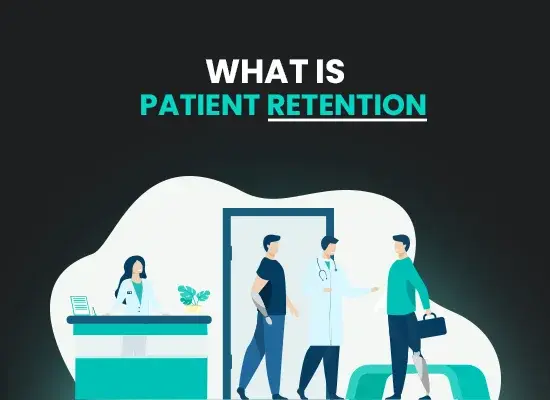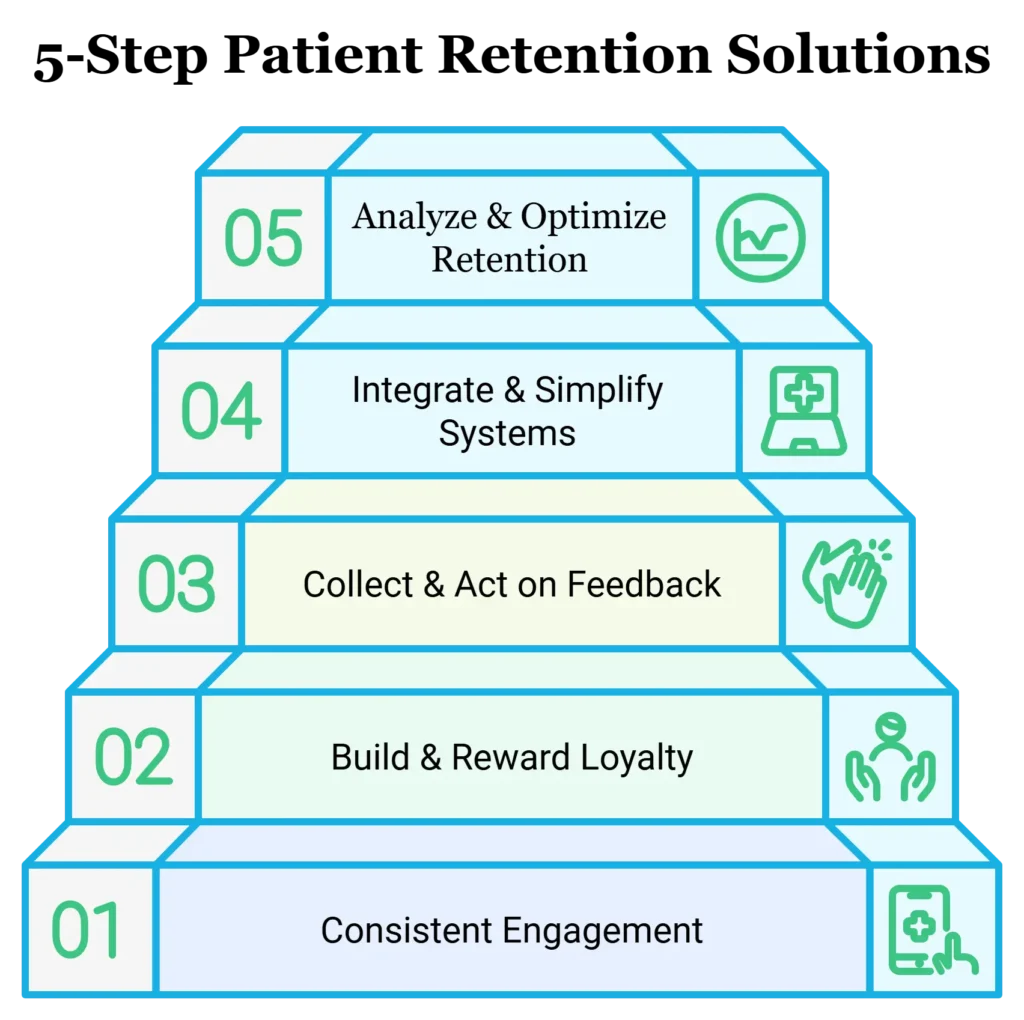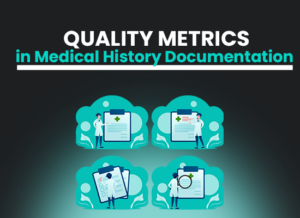What is Patient Retention & Why It Matters More Than Ever
- November 8, 2024

Table of Contents
It has never been more crucial to foster strong, lasting relationships between patients and providers in today’s healthcare environment.
To achieve long-term health outcomes and improve the quality of care, it is essential to keep patients active and committed to their healthcare journey. When it comes to managing chronic conditions, conducting successful clinical trials, or enhancing preventive care efforts, patient retention is crucial.
Retention rates are high because they ensure continuity in treatment, allow for more attuned care strategies, and facilitate research studies aimed at advancing medical science.
What is Patient Retention?
Patient retention refers to the ability of healthcare providers and clinical trials to keep patients engaged and involved over time. It means ensuring that patients continue to receive care or remain in a study until its completion. Effective patient retention is essential for achieving positive health outcomes and reliable research results. Patient retention rates have increased by 15% over the past five years.
High retention rates lead to better continuity of care, which helps in managing chronic conditions and improving overall patient health. In clinical trials, retaining participants ensures that the study has enough data to produce accurate and meaningful results.
For example, a healthcare clinic that successfully retains its patients can monitor their long-term health progress, leading to better treatment plans. Similarly, a clinical trial that maintains high participant retention rates is more likely to achieve its research goals and develop effective new treatments.
- Ensures continuity of care
- Improves patient health outcomes
- Maximizes study validity
- Increases patient satisfaction
Try it - Love it - Buy it
Avail Our Free Trial Now!

Patient Retention in Clinical Trials:
Patient retention in clinical trials faces several challenges. Participants may drop out due to side effects, lack of understanding of the study, or personal reasons like time constraints. Additionally, logistical issues such as inconvenient study locations or schedules can make it difficult to keep participants engaged. Healthcare providers lose up to $150 billion annually due to poor patient retention.
To address these challenges, various strategies can be implemented. These include providing clear and consistent communication, offering incentives, and making study procedures as convenient as possible. Building strong relationships with participants through regular follow-ups and support can also significantly improve retention rates.
For example, a clinical trial that offers flexible scheduling and provides transportation assistance is more likely to retain its participants. This approach helps overcome logistical barriers and shows participants that their comfort and convenience are priorities, leading to higher retention rates.
- Clear and consistent communication
- Offering incentives
- Convenient study procedures
- Building strong participant relationships
- Regular follow ups and support
- Providing transportation assistance
Patient Recruitment and Retention in Clinical Trials:
Balancing recruitment and retention efforts is crucial for the success of clinical trials. Effective recruitment strategies ensure that enough participants are enrolled, while strong retention strategies keep those participants engaged throughout the study. Both aspects are vital for the overall success and reliability of the trial results. Automated appointment reminders reduce no-show rates by 40%.
Integrated approaches for recruitment and retention can lead to more efficient and effective clinical trials. This includes aligning recruitment messaging with retention strategies, using data-driven methods to identify and target potential participants, and creating an immaculate experience from enrollment to study completion. Coordinating these efforts helps minimize dropout rates and maximize participant engagement.
For instance, a clinical trial that uses focused communication from the start can build trust with participants, making them more likely to stay engaged. This integrated approach ensures that participants feel valued and supported throughout the trial, enhancing both recruitment and retention simultaneously.
- Aligning recruitment messaging with retention strategies
- Using data-driven recruitment methods
- Targeting the right participants
- Creating an intact enrollment experience
- Minimizing dropout rates
- Maximizing participant engagement
- Personalized communication to build trust
Patient Retention Strategies:

Effective strategies:
These are crucial for the success of clinical trials. These strategies ensure that participants remain engaged and complete the study. Clear communication and regular follow-ups are key components. Patient satisfaction is directly linked to a 10% increase in retention rates.
Utilizing technology, such as mobile apps and telehealth, makes participation more convenient. Curated care plans and incentives also motivate patients to stay involved.
Example: A clinical trial implemented a mobile app to send reminders and updates to participants. This approach reduced dropout rates by 20% and increased overall patient satisfaction. The use of technology made it easier for patients to stay informed and connected throughout the trial.
- Build strong relationships: Foster trust and open communication with patients.
- Provide clear information: Ensure patients understand the study’s purpose and benefits.
- Offer incentives: Use rewards to motivate continued participation.
- Technology: Implement tools like apps and telehealth to enrich engagement.
How to Calculate Patient Retention Rate?
Calculating the rate involves tracking the number of patients who remain in a study over a specific period. Start by identifying the total number of participants at the beginning. Then, count how many complete the study without dropping out.
Interpreting Patient Retention Rate Metrics:
Interpreting these metrics helps assess the effectiveness of retention strategies. A high retention rate indicates successful engagement, while a low rate may highlight areas needing improvement. Regular analysis allows for timely adjustments to advance retention. Healthcare providers that prioritize retention experience a 35% higher referral rate.
- Identify total participants: Start with the initial number of patients.
- Track completions: Count how many finish the study.
- Use the formula: (Number of completions / Total participants) × 100.
- Analyze trends: Look for patterns over time to understand retention.
- Set benchmarks: Compare rates against industry standards.
- Adjust strategies: Modify approaches based on metric insights.
How to Increase Patient Retention?
Proven methods include building trust and ensuring excellent communication. Regular check-ins and providing clear information about the study keep patients informed and involved. Addressing concerns promptly also helps maintain their commitment.
Best Practices for Sustaining Patient Engagement:
This involves creating a supportive environment. Offering particularized care and recognizing patient contributions fosters loyalty. Additionally, making participation as convenient as possible reduces barriers to retention.
Example: A healthcare provider introduced monthly virtual meetings and responsive feedback for participants in a long-term study. These efforts led to a 15% increase in retention rates, as patients felt more valued and supported throughout the trial.
- Communicate regularly: Keep patients informed with updates and check-ins.
- Provide support: Offer resources and assistance to address patient needs.
- Personalized interactions: Modify communication and care to individual patients.
- Simplify processes: Make participation easy and convenient.
- Recognize contributions: Acknowledge and appreciate patient involvement.
- Offer flexibility: Accommodate patients’ schedules and preferences.
- Use feedback: Collect and act on patient feedback to improve experiences.
- Build a community: Create a sense of belonging among participants.
Patient Retention in Healthcare:
In health care, this refers to keeping patients engaged and continuing to use healthcare services over time. It is crucial for building long-term relationships between patients and healthcare providers. High retention rates often lead to better health outcomes and patient satisfaction.
It helps healthcare facilities maintain a steady flow of patients, ensuring consistent revenue and the ability to invest in quality care. Retained patients are more likely to follow medical advice and participate in preventive care, reducing the need for emergency interventions. Using patient retention software can save healthcare providers up to 25% in administrative costs.
For example, a local clinic that regularly follows up with patients through reminders and personalized care plans sees higher retention rates. These patients are more loyal and trust the clinic, leading to improved health outcomes and a thriving practice.
- Builds long-term patient relationships
- Ensures consistent revenue streams
- Improves patient satisfaction
- Improves overall health outcomes

Patient Retention Strategies in the Healthcare Setting:
Implementing effective strategies is essential for healthcare providers. These strategies include focused communication, excellent customer service, and patient education. By focusing on these areas, healthcare facilities can keep patients engaged and satisfied.
Segmented communication involves sending suitable messages and reminders to patients, making them feel valued and remembered. Excellent customer service ensures that patients have a positive experience every time they visit, increasing their likelihood of returning.
For instance, a hospital that uses precise email reminders for appointments and follows up with patients after their visits sees higher retention rates. Patients appreciate the attention and are more likely to continue using the hospital’s services. Effective retention strategies can lead to a 20% decrease in patient churn rates.
- Personalized communication with patients
- Providing excellent customer service
- Offering patient education programs
- Utilizing feedback to improve services
Impact on Healthcare Outcomes:
When patients remain engaged with their healthcare providers, they are more likely to adhere to treatment plans. This adherence leads to better management of chronic conditions and overall improved health.
High retention rates also allow healthcare providers to better understand patient histories and needs, enabling more accurate diagnoses and curated treatments. This wide-ranging care approach can reduce the occurrence of medical errors and increase the quality of care. Healthcare providers utilizing AI for retention see a 30% improvement in patient follow-up adherence.
Patient Retention Software:
Patient retention software helps healthcare providers manage and improve efforts. These software solutions offer tools for scheduling, communication, and tracking patient interactions. By using retention software, clinics can incorporate their processes and enhance patient engagement.
One notable solution is AI medical history, which leverages artificial intelligence to provide advanced patient engagement and retention features. It offers automated appointment reminders, focused messaging, and inclusive analytics to help healthcare providers better understand and meet patient needs. Integrating AI into patient management systems can enhance retention by 28%.
Such software can automate appointment reminders, send personalized messages, and track patient feedback. This automation ensures that patients feel continuously supported and valued, increasing their likelihood of returning for future care.
For example, a dental practice using software like AI Medical Chatbot can automatically send reminders for checkups and follow-ups on previous treatments, resulting in higher appointment attendance and patient loyalty.
- Automated appointment reminders
- Facilitates personalized patient communication
- Tracks patient interactions and feedback
- Ease scheduling and administrative tasks
Smart Medical History Features:
Ensuring the security of patient data is paramount in healthcare. Medical Chatbots provide security measures to protect sensitive patient information. The platform complies with industry standards such as HIPAA, utilizing advanced encryption and secure data storage solutions.
Smart Medical History’s security features include multi factor authentication, regular security audits, and real-time monitoring to prevent unauthorized access. These measures ensure that patient data remains confidential and secure, fostering trust between patients and healthcare providers.
For example, a healthcare provider using Smart Medical History can confidently manage patient communications and data, knowing that all information is safeguarded against potential breaches and cyber threats.
- HIPAA-compliant data protection
- Advanced encryption methods
- Multifactor authentication
- Realtime security monitoring
| Challenge | Smart Medical History Solution |
|---|---|
| High No-show Rates | Automated appointment reminders and follow-ups |
| Poor Communication | AI-powered personalized messaging and chatbots |
| Managing Large Patient Data | Broad analytics and data integration |
| Ensuring Data Security | Advanced encryption and HIPAA-compliant security features |
| Identifying At-risk Patients | Predictive analytics and machine learning models |
| Maintaining Patient Engagement | Personalized patient journeys and real-time support |
| Administrative Tasks | Automated scheduling and administrative task management |
Top Patient Retention Software Solutions:
There are several top software solutions available for healthcare providers. These include platforms like Solution Reach, Simple Practice, Salesforce Health Cloud, and Smart Medical History. Personalized communication strategies lead to a 22% increase in patient loyalty.
Solution reach focuses on patient communication and engagement, providing tools for automated reminders and personalized messaging. Simple Practice offers scheduling and billing features, while Salesforce Health Cloud integrates patient data for a unified view of patient interactions. Smart Medical History utilizes AI to deliver intelligent patient engagement and retention strategies.
| Feature | Smart Medical History | SolutionReach | SimplePractice | Salesforce Health Cloud |
|---|---|---|---|---|
| AI-Driven Engagement | Yes | No | Limited | Yes |
| Automated Appointment Reminders | Yes | Yes | Yes | Yes |
| Personalized Messaging | Yes | Yes | Yes | Yes |
| Analytics | Yes | Limited | Basic | Advanced |
| Data Security & Compliance | HIPAA-compliant | HIPAA-compliant | HIPAA-compliant | HIPAA-compliant |
| Integration with Wearable Devices | Yes | No | No | Yes |
| Customizable Patient Journeys | Yes | Limited | No | Yes |
| Real-Time Monitoring | Yes | No | No | Yes |
Features to Look for in Patient Retention Software:
When choosing patient retention software, it is important to consider specific features that will benefit your practice. Key features include automated communication, easy scheduling, and robust analytics. These tools as found in AI Medical Chabot help integrate operations and strengthen patient engagement.
Automated communication allows for timely reminders and personalized messages without manual effort. Easy scheduling ensures that patients can book appointments conveniently, reducing barriers to continued care. Robust analytics provide insights into retention rates and patient behaviors, helping to refine strategies.
For example, a healthcare provider selecting software with strong analytics can better understand why patients leave and implement targeted strategies to improve retention based on data-driven insights.
- Automated communication capabilities
- User-friendly scheduling systems
- Detailed analytics and reporting
- Integration with existing healthcare systems
Patient Retention Solutions:
Effective patient retention solutions encompass a range of strategies and tools designed to keep patients engaged. These solutions include communication platforms, loyalty programs, and patient feedback systems. By implementing wide retention solutions, healthcare providers can address various aspects of patient engagement.
Enterprise AI chatbots enable consistent and distinct interactions with patients. Loyalty programs reward patients for their continued patronage, encouraging them to return. Patient feedback systems allow providers to gather and act on patient opinions, improving services and satisfaction.
For example, a hospital that uses a combination of automated messaging and a loyalty rewards program sees increased patient loyalty and higher retention rates, as patients feel recognized and valued.
- Communication platforms for consistent interaction
- Loyalty programs to reward patient loyalty
- Patient feedback systems for service improvement
- Multichannel engagement strategies
Patient Retention Solutions for Healthcare Providers:
These solutions integrate various tools and strategies to address different aspects of retention. By using a detailed approach, healthcare providers can ensure that all factors are covered. Telehealth services have contributed to a 12% improvement in patient retention.
These solutions typically include features like automated communication, patient education resources, and detailed reporting. They help simplify processes and provide a holistic view of patient interactions, making it easier to identify and address retention challenges.
For instance, a clinic utilizing a retention solution can manage appointments, send educational materials, and track patient satisfaction all within one platform, leading to improved retention and patient loyalty.
- All-in-one engagement platforms
- Integrated appointment and communication tools
- Educational resources for patients
- Detailed reporting and analytics

Solutions to Address Retention Challenges:
Every healthcare provider faces unique retention challenges, and revised solutions are essential to address these effectively. Adapted strategies consider the specific needs and circumstances of each practice. This personalization ensures that retention efforts are relevant and impactful.
Some shaped solutions might include unique communication plans, specialized loyalty programs, and targeted patient education. By adapting strategies to fit the specific context, healthcare providers can more effectively engage their patients and improve retention rates.
For example, a rural clinic may implement an amended solution that includes mobile appointment reminders and local community engagement initiatives, addressing unique needs.
- Individualized communication plans
- Specialized loyalty programs
- Targeted patient education initiatives
- Adaptable strategies for specific needs
Patient Retention Specialist:
A patient retention specialist is a professional dedicated to improving rates within a healthcare organization. They develop and implement strategies to keep patients engaged and satisfied with their care. This role is crucial for maintaining a steady patient base and enhancing overall healthcare quality.
Patient retention specialists analyze patient data to identify trends and areas for improvement. They work closely with healthcare teams to design and execute retention strategies, such as improving communication or enhancing patient services. Their goal is to ensure that patients continue to choose their healthcare provider.
For example, a specialist at a large hospital might analyze patient feedback to identify common concerns and implement new communication protocols, resulting in increased patient satisfaction and retention. AI-driven patient engagement tools have shown a 25% increase in patient satisfaction scores.
Role of a Patient Retention Specialist:
The role of a specialist involves several key responsibilities. They focus on creating and executing strategies to keep patients engaged with the healthcare provider. This includes managing communication, analyzing patient feedback, and identifying retention opportunities.
Retention specialists work to understand patient needs and preferences, ensuring that services are aligned with these expectations. They also monitor retention metrics and adjust strategies as needed to improve outcomes. Patient feedback systems contribute to a 25% increase in retention by addressing patient concerns promptly.
For example, a retention specialist might conduct surveys to gather patient feedback and use the insights to enhance service offerings, leading to higher patient satisfaction and loyalty.
- Create and execute engagement strategies.
- Manage patient communication
- Analyze feedback and data
- Monitor and adjust retention efforts
Skills and Qualifications of an Effective Patient Retention Specialist:
An effective patient retention specialist possesses a range of skills and qualifications. They need strong communication and interpersonal skills to interact effectively with patients and healthcare teams. Analytical abilities are also important for interpreting data and identifying retention trends. Patient education programs have been shown to improve retention rates by 15%.
Additionally, a retention specialist should have a background in healthcare or a related field, along with experience in customer service or patient relations. These qualifications enable them to understand the healthcare environment and develop relevant retention strategies.
Future of AI in Patient Retention:
Artificial intelligence can analyze large amounts of patient data to identify patterns and predict patient behavior. This helps healthcare providers alter their retention strategies more effectively.
AI-powered chatbots and virtual assistants can provide 24/7 support, answering patient queries and scheduling appointments. These technologies augment patient engagement by providing timely and patient-centric interactions, making patients feel supported and valued. Patients retained through loyalty programs are 35% more likely to recommend the provider to others.
For example, a clinic using AI chatbots can instantly respond to patient inquiries and schedule follow-up appointments, improving the overall patient experience and increasing retention rates.
- AI analyzes patient data for patterns.
- Predictive analytics for patient behavior
- AI-powered chatbots for support
- Targeted interaction through AI
Future of AI in Patient Retention Strategy:
The future of AI in patient retention strategies looks promising, with continued advancements in technology. AI will enable more precise targeting of retention efforts based on individual patient needs and behaviors. This will make retention strategies more efficient and effective. Healthcare organizations with strong retention strategies experience a 50% increase in patient lifetime value.
For instance, future AI systems could integrate with wearable devices to monitor patient health in real-time, allowing providers to offer timely interventions and support, thereby increasing patient loyalty and retention.
- Predictive models for patient attrition
- Real Time health monitoring integration
- Development of personalized engagement plans
The Impact of Artificial Intelligence on Patient Retention:
Artificial intelligence significantly impacts by automating and improving various retention processes. AI can unify communication, making it more consistent and personalized. It also provides valuable insights through data analysis, helping healthcare providers understand patient needs better. Retention specialists can improve patient loyalty by up to 20% through targeted strategies.
For example, an AI system that manages appointment scheduling and follow-ups can reduce administrative burdens on staff, allowing them to spend more time addressing patient concerns and improving satisfaction, thereby enhancing retention. Implementing patient retention software can improve retention rates by up to 20%.
- Automates routine communication tasks
- Provides data-driven insights
- Improves efficiency in patient management
- Improves overall patient experience
Subscribe to our Newsletter!
Subscribe our Newsletter to stay updated

Conclusion:
Embracing technology is essential for sustainable tools like patient retention software and AI can update processes and boost patient engagement. By leveraging these technologies, healthcare providers can maintain high retention rates effectively.
For example, integrating AI with existing patient management systems can provide deeper insights and more personalized care, ensuring that healthcare providers can adapt to changing needs and maintain strong patient relationships. Chronic disease management improves by 18% with higher patient retention rates.
- Adoption of advanced technologies
- Continuous innovation in retention strategies
- Focus on distinctive patient care
- Integration of AI and data analytics
This market is continuously evolving with advancements in technology and changing patient expectations. Providers must stay updated with the latest trends and innovations to remain competitive.
Read More Blogs
See what’s trending in the medical world with our blogs.




